ii SIPP
Income drawdown death benefits

Income drawdown gives you greater freedom and flexibility around how you fund your retirement. You can draw down what you want, when you want, while leaving the rest of your drawdown pot invested tax-efficiently.
It also offers some advantages when it comes to death benefits, as we explain here.
What are the financial benefits of dying in drawdown?
- Leave anything to your beneficiaries: Unlike the state pension and most annuity products, which only last as long as you do, you can leave anything remaining in your drawdown pot to your beneficiaries.
- Choose how it is paid: In most cases, your beneficiary or beneficiaries will be able to choose how they take this money, either as a lump sum, continue in drawdown or buy an annuity. There are no age restrictions on when they can access it either, so they won’t have to wait until age 55 (57 from 2028).
- Pass it onto future generations: The financial benefits of your drawdown pot don’t have to stop there. Your beneficiaries can choose to leave anything that remains in drawdown to their beneficiaries too. This means your pension could potentially trickle down to your grandchildren, great-grandchildren and beyond.
- Tax-free before 75: Drawdown is also a tax-efficient way to pass on wealth after you have died. Death benefits are paid tax-free if you die before age 75 (Lump Sum are subject to the Lump Sum and Death Benefit Allowance (LSDBA) but, if you die after age 75, and any money is taken out, either as a lump sum or as income it will be taxed at their marginal rate). However, withdrawals can be staggered to minimise the tax bill.
- No inheritance tax: A further benefit is that anything that is still in your drawdown pot at death is outside of your estate for inheritance tax. By leaving money in drawdown, you could potentially increase the amount of money you pass on tax-efficiently. (Please note: from 6 April 2027, pensions and death benefits will become subject to inheritance tax. Find out more here.)
Who can inherit your drawdown pension?
You can leave your drawdown pension to anyone you like. It could be your spouse, partner or a child, or you could nominate more than one person, perhaps splitting it between your two children or even your six grandchildren.
It doesn’t have to be a family member either. You could pick a close friend or leave it to charity if you prefer.
Whatever your wishes, make sure you tell your pension provider. Completing a nomination or expression of wishes form guides your pension trustees when they decide who should receive death benefits.
These forms aren’t legally binding, as trustees must use their discretion when identifying your beneficiaries, but in the vast majority cases they will follow your wishes.
How are drawdown death benefits taxed?
The way in which death benefits are taxed is dependent on the age of the person with the drawdown pension when they died, with age 75 the key birthday.
Tax on drawdown death benefits before age 75
If you die before age 75, death benefits are usually tax-free. There is zero tax to pay on your remaining pension when taken out as income. If it is taken as a lump sum will be tax-free subject to your remaining Lump Sum and Death Benefit Allowance (LSDBA).
Any lump sum death benefits paid from funds that were crystallised before 6 April 2024, will not be tested against the LSDBA, since they will have already been tested against the old. The balance over your remaining allowance will be taxed at your beneficiary's marginal rate of income tax.
Read more about Lump Sum Allowances.
There is one condition for it to be tax-free. The death benefits must be paid, or designated into another arrangement such as drawdown, within two years of the earlier of the following:
- the date your pension provider was notified of your death
- the date they could reasonably have been expected to know of your death
Tax on drawdown death benefits after 75
If you die after age 75, death benefits are taxable at the beneficiary’s marginal rate of income tax.
How much tax they pay will depend on how they access the death benefits.
Take it as a lump sum, and the full amount will be added to their other income and taxed at the appropriate rate.
Take it through drawdown and they will only be taxed on any income they take, when they take it. This allows them to take advantage of multiple years’ tax allowances , which could help to minimise the tax they pay.
It’s important to remember the test against the LSDBA allowance and any payment of tax before age 75 only applies if death benefits are taken as lump sum.
Is there inheritance tax on drawdown pension death benefits?
Anything that was still in your drawdown pension when you died is outside your estate for inheritance tax purposes. This means there is no inheritance tax to pay on it.
Understanding inherited drawdown
When your beneficiaries inherit a drawdown pension, they will need an account to receive the money. This could be a SIPP with the same provider or they could open one elsewhere.
They will then be able to choose whether they want to take your drawdown pension death benefits as a lump sum, remain in drawdown or buy an annuity.
This hasn’t always been the case. Before the rules on inherited drawdown were relaxed in April 2015, only dependants were able to receive drawdown income as a death benefit. This meant that only your spouse or civil partner; a dependant child; or a partner if the trustees believe they are financially dependent or inter-dependent on you, could take your death benefits as drawdown.
Now, anyone you nominate – your nominee or beneficiary – can receive drawdown income as a death benefit.
This relaxation of the rules makes it much simpler to understand but you will still come across different terminology such as dependant drawdown, nominee drawdown and beneficiary drawdown.
What is successor drawdown?
There is another type of inherited drawdown to add to the mix too – successor drawdown.
Successors are the individuals who inherit any unused drawdown funds that have already been inherited. For example, if you leave your drawdown pension to your daughter, she could nominate her children to receive anything that is left when she dies.
Where drawdown pensions trickle down generations in this way, it is important to be aware of the tax treatment. How the death benefit is taxed is always dependent on the age of the person you inherit it from. If they were under age 75, their remaining LSDBA will also be taken into account.
Why is it important to nominate a beneficiary?
Nominating a beneficiary is an easy way to increase the likelihood that your pension death benefits will be paid in line with your wishes.
All you need to do is complete a nomination or expression of wishes form, which your pension provider will be able to supply. This will help to guide the trustees when deciding who receives death benefits.
Nominating beneficiaries also means they have more choice over how they take your drawdown pot. If someone isn’t nominated, but the trustees decide they should benefit, it may only be possible to pay death benefits as a lump sum. This can happen when the deceased has nominated someone else or there is a surviving dependant.
It is also good to name beneficiaries rather than nominating a class of individuals, for instance, children or grandchildren. Again, this will give them greater choice over how they take death benefits.
And, don’t worry if your plans change. You can submit a new nomination form to reflect any changes to your wishes as often as you like.
How can Pension Wise help?
If you have a defined contribution pension scheme and are 50 or over, then you can access free, impartial guidance on your pension options by booking a face to face or telephone appointment with Pension Wise, a service from MoneyHelper.
If you are under 50, you can still access free, impartial help and information about your pensions from MoneyHelper.

Learn more about our SIPP
Learn how to make the most of your SIPP with our useful guides.
Important information: A SIPP is for those wanting to make their own investment decisions when saving for retirement. As investment values can go down as well as up, the amount you retire with could be worth less than you invested. Usually, you won’t be able to withdraw your money until age 55 (57 from 2028). Before transferring your pension, check if you’ll be charged any exit fees and make sure you don't lose any valuable benefits such as guaranteed annuity rates, lower protected pension age or matching employer contributions. If you’re unsure about opening a SIPP or transferring your pension(s), please speak to an authorised financial adviser.